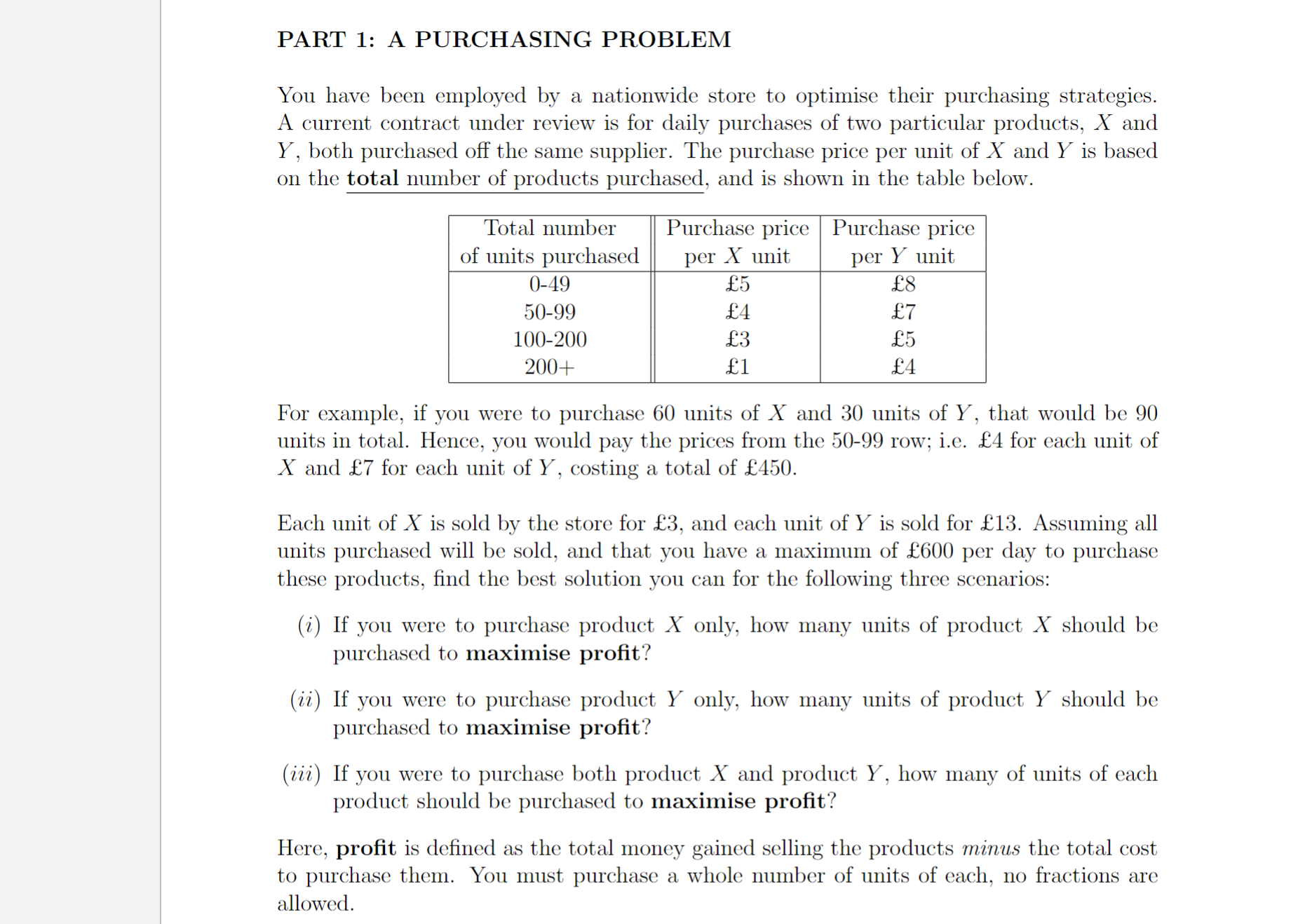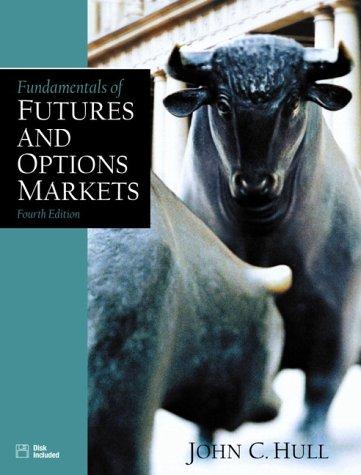
PART 1: A PURCHASING PROBLEM You have been employed by a nationwide store to optimise their purchasing strategies. A current contract under review is for daily purchases of two particular products, X and Y, both purchased off the same supplier. The purchase price per unit of X and Y is based on the total number of products purchased, and is shown in the table below. For example, if you were to purchase 60 units of X and 30 units of Y, that would be 90 units in total. Hence, you would pay the prices from the 50-99 row; i.e. 4 for each unit of X and 7 for each unit of Y, costing a total of 450. Each unit of X is sold by the store for 3, and each unit of Y is sold for 13. Assuming all units purchased will be sold, and that you have a maximum of 600 per day to purchase these products, find the best solution you can for the following three scenarios: (i) If you were to purchase product X only, how many units of product X should be purchased to maximise profit? (ii) If you were to purchase product Y only, how many units of product Y should be purchased to maximise profit? (iii) If you were to purchase both product X and product Y, how many of units of each product should be purchased to maximise profit? Here, profit is defined as the total money gained selling the products minus the total cost to purchase them. You must purchase a whole number of units of each, no fractions are allowed. PART 1: A PURCHASING PROBLEM You have been employed by a nationwide store to optimise their purchasing strategies. A current contract under review is for daily purchases of two particular products, X and Y, both purchased off the same supplier. The purchase price per unit of X and Y is based on the total number of products purchased, and is shown in the table below. For example, if you were to purchase 60 units of X and 30 units of Y, that would be 90 units in total. Hence, you would pay the prices from the 50-99 row; i.e. 4 for each unit of X and 7 for each unit of Y, costing a total of 450. Each unit of X is sold by the store for 3, and each unit of Y is sold for 13. Assuming all units purchased will be sold, and that you have a maximum of 600 per day to purchase these products, find the best solution you can for the following three scenarios: (i) If you were to purchase product X only, how many units of product X should be purchased to maximise profit? (ii) If you were to purchase product Y only, how many units of product Y should be purchased to maximise profit? (iii) If you were to purchase both product X and product Y, how many of units of each product should be purchased to maximise profit? Here, profit is defined as the total money gained selling the products minus the total cost to purchase them. You must purchase a whole number of units of each, no fractions are allowed







